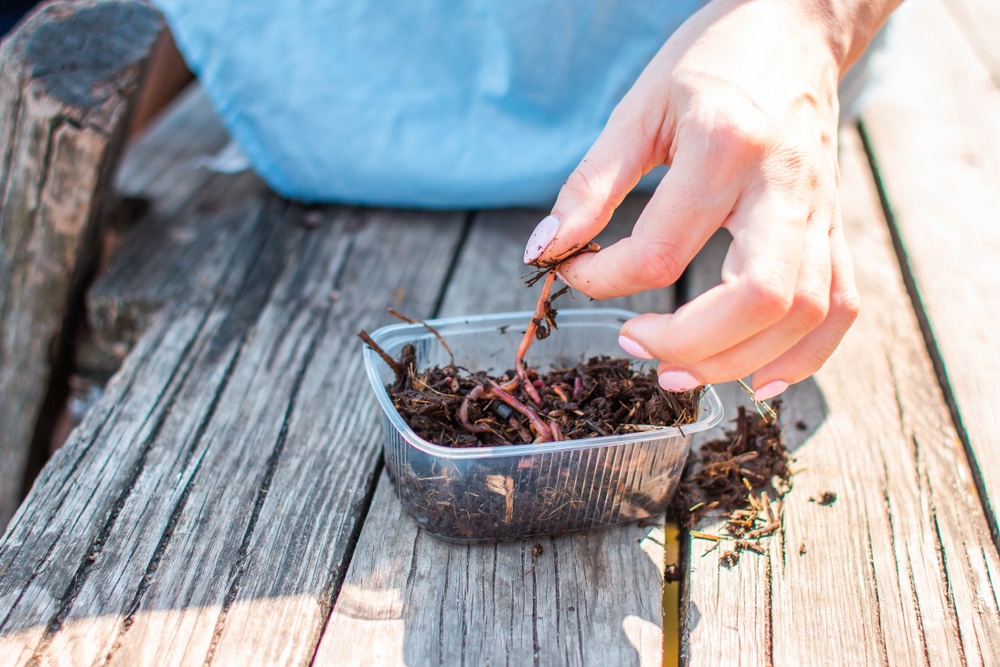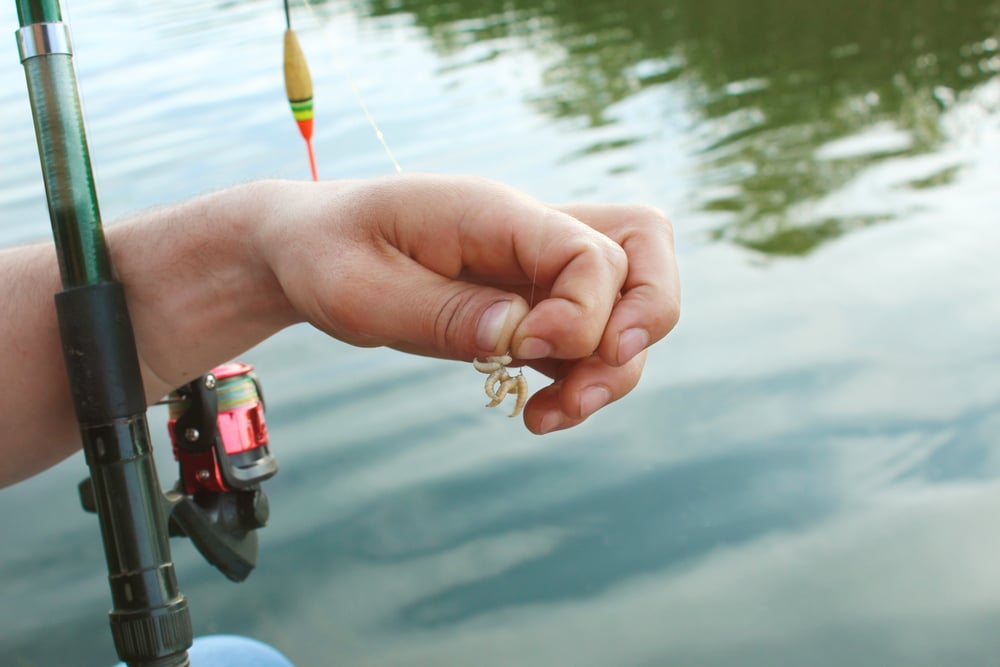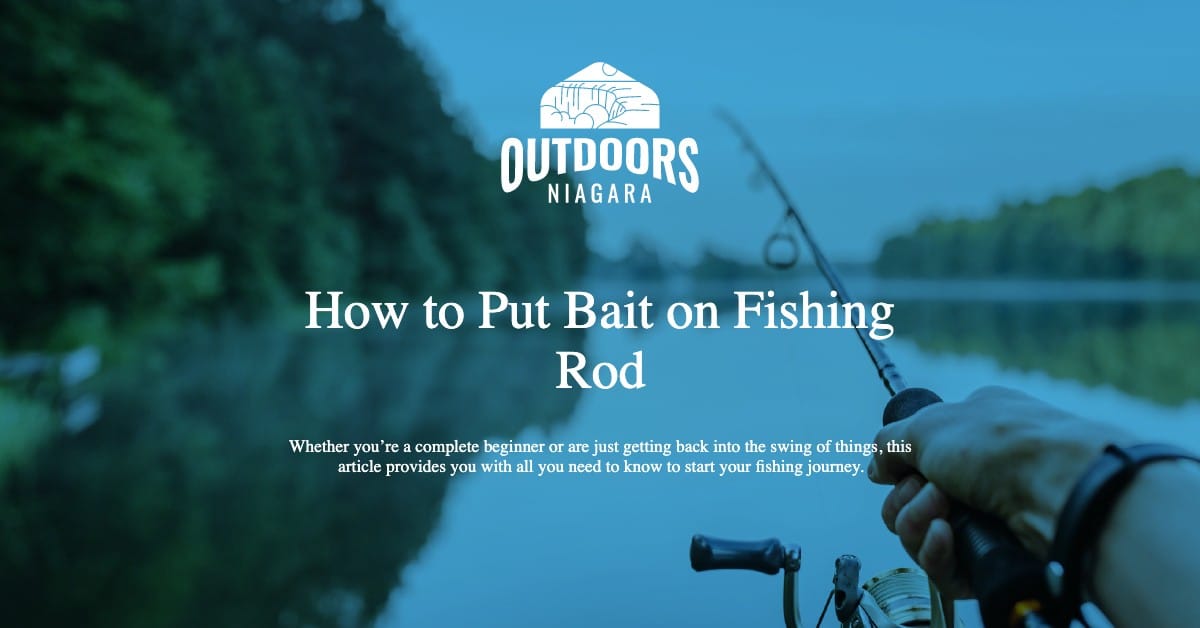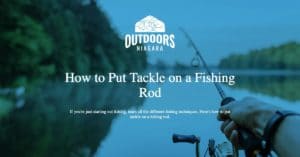Whether you’re a complete beginner or are just getting back into the swing of things, this article will provide you with all you need to know to start your fishing journey on the right path.
This article, in particular, will focus on how to correctly put bait on your fishing line while also covering related topics.

Contents
Types of Rods
Let’s first establish the kind of rods you can get before we move onto the bait section.
We wouldn’t want to jump the line! Most modern fishing rods are made from fiberglass or carbon fiber (sometimes called graphite), with older fishing rods having been made out of supple woods such as bamboo or hickory.
Carbon fiber fishing rods tend to be more sensitive and delicate, making them great for fishing smaller fish but not for big fish due to them lacking durability.
Fiberglass rods, on the other hand, are more durable and thus better suited to reeling in bigger fish and using larger bait.
Whichever rod you decide to go with, just make sure that you buy a good quality fishing rod.
On the slim chance you hear about or come across a so-called “iridium” rod for fishing, we would recommend steering clear of them.
They are generally sold for a pretty penny, considering that actual iridium is an extremely rare metal that would be absurdly expensive by itself.
Sometimes, some fishing rods will have the word iridium included in the model’s name of that particular rod; however, that does not mean that the rod is actually made out of iridium. At best, it’s just made from cx-1 carbon.

Types of Fishing
Having no knowledge of fishing, you might think, rightly so, that all fishing is fishing.
And while it is, for the most part, there are about five fishing levels/categories/types of fishing.
They are: 1) fly-fishing, 2) trolling, 3) bait fishing, 4) bait casting, and 5) spinning.
These categories are all dependent on the species of fish you are hunting for and the type of water you are fishing in.
Types of Bait
Great, now that we have established the types of rods and fishing, we can move on to the types of bait you can use.
There are a lot of different bait types that you can buy and use, such as artificial bait, organic/live bait, crankbait, jerk bait, and plastic bait.
Each type of bait or fishing lure has a specific role or strength that they offer you.
For example, when fishing bass, it is recommended to use organic/live bait such as battered worms.
The reason is that bass are ambush predators that prey on wounded fish.
Ultimately, the type of fish you know you will be fishing should inform your choice of bait to use.
Always do some research on the area beforehand to ensure you use the correct bait for the said area, and bring a box to put your stacks of bait in for easy access.
How to Bait
Now, this part will differ slightly depending on the type of bait or lure you decide to go with.
Before hooking on your piece of bait, make sure that you’ve securely tied your line onto your reel.
The best knot to go with is an arbor knot.
As for tying on your hook, there are several different kinds of knots you try out.
That said, to keep this simple, we are going to go with a standard Unit knot.
Baiting your Rod
To start, thread the line from your rod through the hook, keeping the threaded line parallel to the mainline as you bring it back.
To make a loop, place the tag end above the double line.
Wrap the tag end 5-8 times (up to you) around the double line and through the loop.
To make sure the turns are snug, pull on the tag end and then pull the knot down towards your eye to finish up.
Live Bait
Let’s start with live bait. Ideally, you will want to pierce your bait twice with your hook.
This will ensure that the bait does not come loose and fail off or get taken away too easily by a clever enough fish.
For example, when using worms, you will want to thrust the hook point through one end of the worm and then thrust it through the back part to really get it stuck.
The same principle applies to bigger bait such as small fish, pushing the hook first through the mouth and then again through a bigger portion of its body.
Artificial Bait
As for plastic or artificial types of baits, generally, they will have a ring or hook that attaches onto the spot where you would attach your normal hooks for fishing, with the spot doubling as a slot for bait attachment.
Once attached, you will then attach a hook or two onto the bait piece and then secure it.
Remember, just because you are using some fancy or special bait pieces does not mean you will increase your fishing rod
effectiveness.
Fishing skill effectiveness and proficiency are only assured with lots of practice and hard work, as with everything in life.
FAQ
What food can I use for fishing bait?
Most fish are opportunistic eaters or omnivorous, meaning they will eat most things.
Worms are a classic standard, but chunks of chicken, meat, and, sure enough, fish are also a great choice.
Pieces of bread and starches are also good.
What is the best bait for river fishing?
When it comes to river fish, worms and insects are king. Bass are an example of a river fish, and they, like other river fish, tend to be ambushers, so keep that in mind.
How effective are artificial fishing baits?
Artificial bait pieces can be extremely effective thanks to their bright colors, shapes, and applied scents.
The other added benefit is that some lures will actually intimidate some types of fish you would prefer not to catch by accident.
Final Thoughts
There you have it, a detailed guide to start you on your fishing journey.
We hope our breakdown of bait types, hooking techniques, and overall information was of use to you. Happy fishing!







